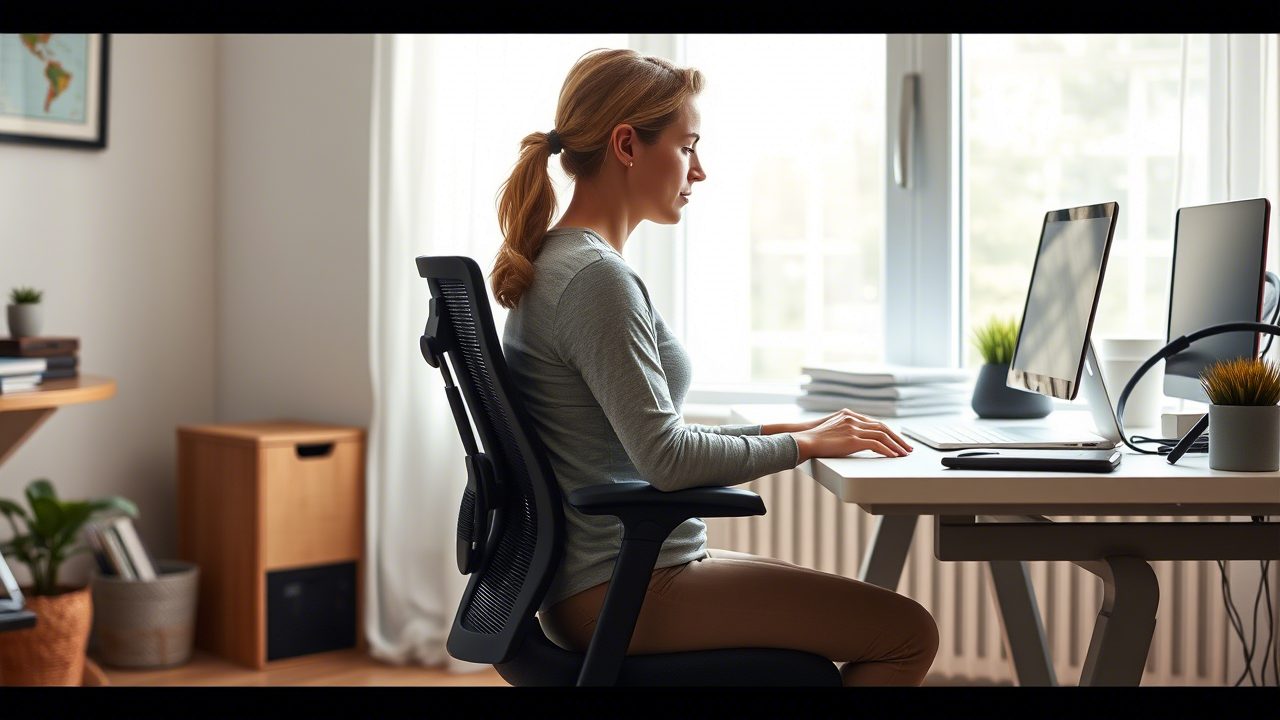Top Gadgets That Help with Posture Correction at Desk for Better Spine Health
Spending hours sitting at a desk can silently wreck your posture. Over time, slouching, craning your neck forward, and rounding your shoulders become unconscious habits that lead to chronic pain and long-term spinal damage. Fortunately, there are effective gadgets that help with posture correction at desk setups, designed to train your body into maintaining a healthier, more natural alignment. These aren’t gimmicks or quick fixes—they’re practical tools built with biomechanics and real-world ergonomics in mind.
If you’ve noticed your shoulders aching after work or your lower back feeling stiff, you’re not alone. Most desk-bound professionals and students experience these issues. It’s not always about laziness; poor posture is often a byproduct of bad furniture, screen height misalignment, and lack of body awareness. Gadgets that help with posture correction at desk setups are designed to intervene exactly where these problems begin. They adjust your environment or actively remind you to change your positioning. The result: fewer headaches, better circulation, and a spine that doesn’t feel like it’s collapsing by 5 PM.
The Real Cost of Poor Desk Posture
Poor posture isn’t just about looking slouched—it affects every system in your body. When you sit with poor alignment, your muscles have to work harder to support your frame. Over time, this causes muscular imbalances, joint strain, and fatigue. It also impacts breathing, digestion, and even mental clarity. Your desk may feel like a place of productivity, but if your posture is off, your body is working harder than it should just to stay upright.
Work-related back pain is one of the leading causes of missed workdays and long-term disability. But instead of relying solely on physical therapy or stretching routines, posture-correcting gadgets offer an easier, often more immediate solution. They integrate seamlessly into your daily routine and require little conscious effort after setup.
Gadgets That Help with Posture Correction at Desk Workstations
To get the most value from your desk time, you need gear that encourages alignment and comfort. Gadgets that help with posture correction at desk environments generally fall into a few categories: wearables, chair accessories, desk hardware, and smart devices that track movement. All are focused on creating physical or visual feedback loops that train better posture.
One of the most popular posture correction tools is the wearable posture trainer. These small, lightweight devices are worn between the shoulder blades and connect to a smartphone app. They gently vibrate when you begin to slouch, reminding you to straighten up. Unlike braces that force you into a rigid position, these gadgets train your muscles to engage naturally. This muscle memory eventually becomes your new baseline posture.
Another effective solution is a posture-correcting chair cushion. These cushions use memory foam and contoured shaping to support the lumbar spine and promote pelvic tilt—the key to proper seated alignment. By simply sitting on them, your spine shifts into a healthier curve. These gadgets are subtle, affordable, and perfect for anyone who doesn’t want a visible device but needs immediate support.
Standing desk converters are also powerful tools in posture correction. They allow you to alternate between sitting and standing throughout the day, reducing spinal pressure and encouraging more active alignment. Most come with adjustable height settings so your monitor and keyboard remain at eye and elbow level, preventing you from hunching forward.
Then there’s the under-desk footrest. Often overlooked, this tool corrects lower body posture by raising the feet and aligning the hips. With your knees bent at a 90-degree angle, your pelvis sits properly, which in turn supports an upright spine. Paired with ergonomic seating, this simple device drastically reduces lower back fatigue.
Monitor arms and laptop stands also play a crucial role. Gadgets that help with posture correction at desk setups always include screen positioning because screen height is a major culprit of neck and upper back strain. When the monitor is too low, users instinctively lean forward. Raising the screen to eye level prevents this, instantly encouraging upright posture.
Tech That Trains Better Habits
Smart posture trainers are taking things a step further. These AI-enhanced gadgets use sensors and algorithms to track your seated behavior throughout the day. They offer real-time posture feedback, suggest breaks, and even provide stretching routines through connected apps. Some office chairs now include posture sensors that collect data and coach you through vibrations or mobile alerts.
You don’t need to overhaul your entire workspace to make progress. Many posture-correcting gadgets are compact and easy to implement. Even something as simple as a wearable clip that vibrates when you lean too far forward can have a dramatic effect over a few weeks.
Incorporating reminders into your day also helps. Some posture-correcting gadgets pair with your smart devices to issue alerts at regular intervals. These act as gentle nudges to readjust your position, stand up, or stretch. By syncing your environment with your intentions, these tools reduce the mental load and let habit do the heavy lifting.
Long-Term Benefits of Desk Posture Tools
Using gadgets that help with posture correction at desk setups isn’t just about reducing discomfort—it’s about building resilience. A supported spine increases energy, decreases mental fog, and reduces the risk of chronic injury. It improves breathing mechanics, helping oxygenate your brain and maintain focus during long work or study sessions.
Posture training also builds muscle tone in the core and upper back. These aren’t exercises, but over time, your muscles begin to activate more regularly in support of a straighter position. For those dealing with tension headaches or shoulder pain, better posture often brings noticeable relief within days.
There’s also the confidence factor. People with good posture tend to look more self-assured and energized. Whether you’re leading a Zoom call or studying at your desk, your presence improves with alignment.
Another long-term benefit is reduced dependence on pain medications or physical therapy. While gadgets aren’t a replacement for medical treatment, they can be a frontline defense against posture-related health issues. Investing in a few posture correction tools today can save hundreds—or thousands—down the line.
Creating a Desk Setup That Works for You
Everyone’s body is different, and the key is customizing your setup with the right combination of gadgets. Test what works. Maybe a standing desk isn’t practical, but a lumbar support cushion and screen riser completely change your comfort level. Maybe a wearable trainer feels annoying, but an under-desk footrest makes all the difference.
Don’t wait until you’re in pain to take posture seriously. Gadgets that help with posture correction at desk settings are more accessible than ever and offer real, measurable improvements. Whether you’re working remotely, gaming, studying, or managing an office, these tools turn bad habits into better movement.
Commit to one or two key upgrades and you’ll notice the shift quickly. Posture is foundational. Fix it, and everything else improves—energy, focus, endurance, and even mood. If you spend more than a couple of hours a day at a desk, these gadgets are not optional. They’re essential.
There’s no perfect one-size-fits-all solution, but there are reliable tools designed for real people doing real work. Choose the ones that fit your space, your habits, and your goals. You’ll sit straighter, feel better, and work longer without breaking your body in the process.
If you’re looking for long-term comfort, strength, and focus, invest in gadgets that help with posture correction at desk setups. Your spine will thank you every single day.






